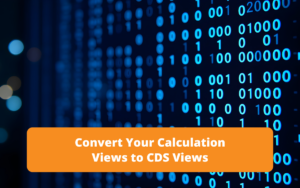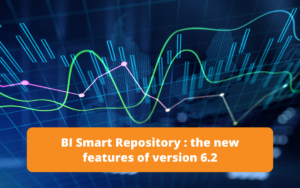Introduction
Calculation Views have long been the cornerstone of analytical modeling in SAP HANA. Widely used in countless projects, they have enabled the creation of powerful—but sometimes complex and rarely standardized—data layers.
With the widespread adoption of S/4HANA and the emergence of Core Data Services (CDS Views) as the new modeling standard, companies now need to consider a gradual and controlled transition. Moving to CDS Views enables smoother integration with modern analytical solutions and stronger alignment between IT and business teams.
RapidViews facilitates this migration through two major assets: comprehensive Business Content based on CDS Views and a governance platform called the BI Smart Repository.
Why Migrate from Calculation Views to CDS Views?
CDS Views are now at the heart of SAP’s data modeling strategy. Natively integrated with S/4HANA, they form the foundation of the Virtual Data Model (VDM) and are directly used by many Fiori applications. SAP strongly encourages their adoption—not only for their functional power but also for their alignment with modern development standards.
Unlike Calculation Views, which reside exclusively in the database layer (SAP HANA), CDS Views run in the ABAP layer. This allows them to benefit from: a unified security framework, fine-grained authorization management (annotations, PFCG), direct integration with OData services, ehanced interoperability with tools such as SAP Analytics Cloud or Datasphere
However, migrating dozens—or even hundreds—of Calculation Views to CDS Views is not trivial. It requires identifying functional equivalents, avoiding manual reconstruction of complex models, and leveraging standardized, proven content to secure the transition.
Automatically Identifying CDS Equivalents: The Role of the Wizard
RapidViews simplifies this transition through the Analytics Wizard integrated into the BI Smart Repository. Its function is simple: you drag a Calculation View into the interface, and the tool automatically analyzes its structure, fields, and sources to suggest the equivalent CDS View.
This process enables:
Significant time savings by avoiding manual searches
Standardization based on SAP or RapidViews content
Risk reduction through alignment with SAP best practices
This feature acts as a real migration accelerator, providing reliable matches in 70–80% of cases—sometimes even 100%.
Ready-to-Use CDS Business Content
The RapidViews library contains hundreds of ready-to-use CDS Views covering key S/4HANA domains: Finance, Logistics, Production, Controlling, etc.
These contents are:
SAP certified
Documented with KPIs ready for analysis
Customizable to your functional requirements
They provide a solid foundation to replace your existing Calculation Views while relying on standard, reliable, and sustainable models.
Integrated Governance and Documentation
Migrating technical objects alone is not enough—you also need to preserve and transfer the associated functional knowledge. This is where the BI Smart Repository comes in, enabling:
Automatic documentation of used CDS Views
Full traceability (data lineage, impact analysis)
A cross-platform catalog covering SAP, Datasphere, Power BI, and more
This centralized governance ensures a smooth transition while strengthening collaboration between IT and business teams.
A Methodology for Fast Migration
Typical steps for migrating Calculation Views to CDS Views with RapidViews include:
Identify the Calculation Views in use and their business purposes
Perform technical analysis of objects via the Smart Repository
Suggest equivalent CDS Views using the Analytics Wizard
Deploy RapidViews Business Content
Customize functionality with users
Document and implement centralized governance
This approach also ensures continuity for business users: existing reports can simply be reconnected to the migrated CDS Views in place of the original Calculation Views. Thanks to RapidViews’ Business Content, models are already aligned with functional expectations, enabling a seamless transition without reporting interruptions.
Use Case: Finding the CDS Equivalent of the F_ORDER_BOOK_RV Calculation View Imagine you use a Calculation View called F_ORDER_BOOK_RV
Imagine you are using a Calculation View F_ORDER_BOOK_RV, built around sales management, that you want to migrate.
With the Smart Repository Wizard:
You drag F_ORDER_BOOK_RV into the interface.
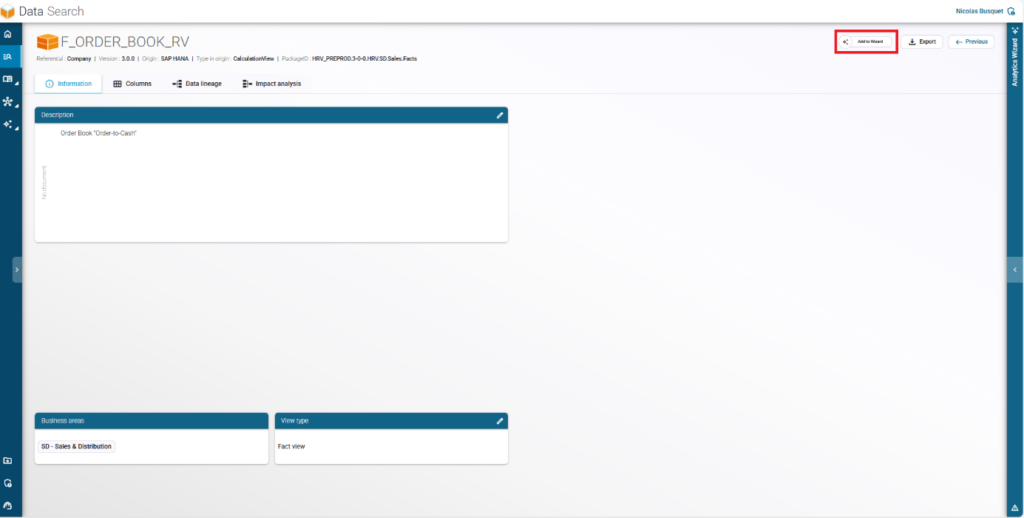
2. The tool analyzes the structure, calculated fields, filters, and dependencies.
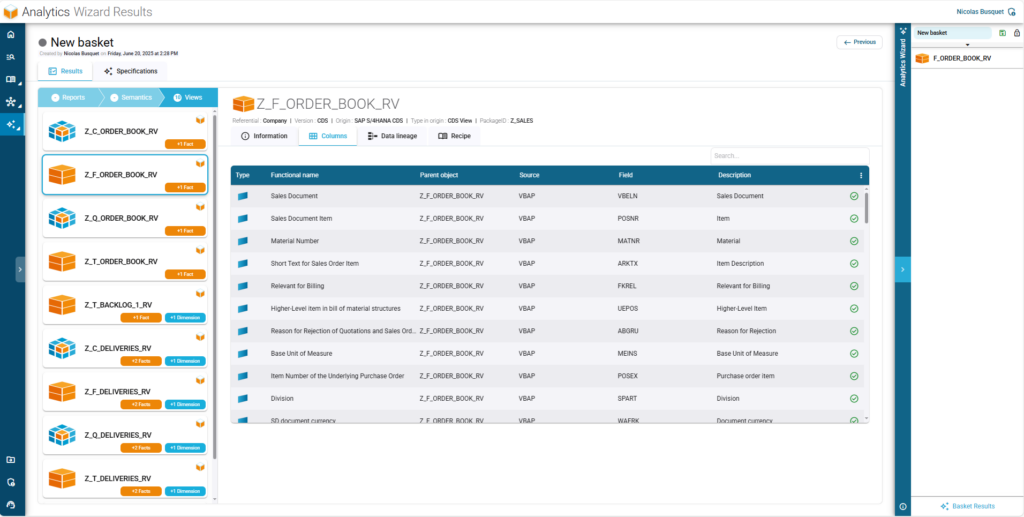
3. It suggests an equivalent standard RapidViews (or SAP) CDS View, for example Z_F_ORDER_BOOK_RV.
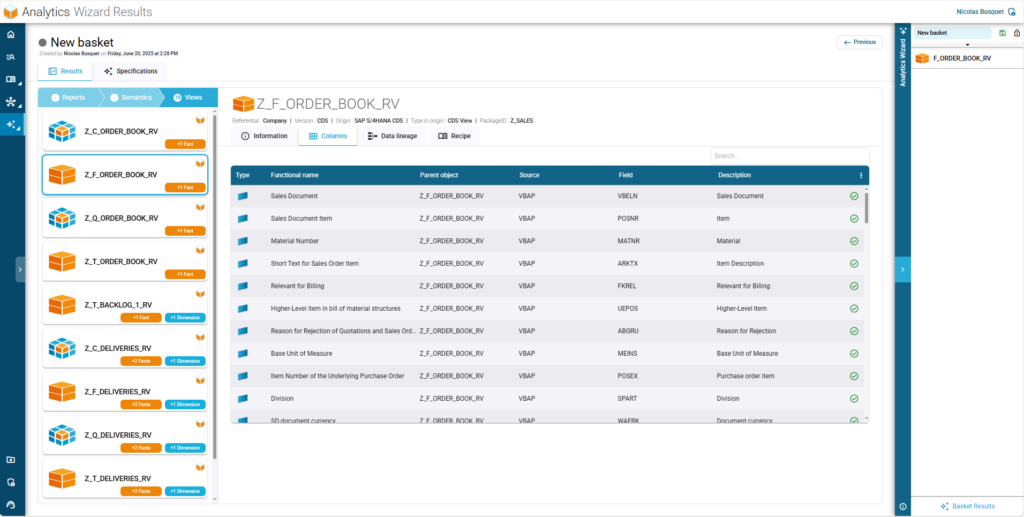
4. You can immediately view the exposed fields, missing fields, the CDS data lineage, and a functional recipe to match the Calculation View 100%.
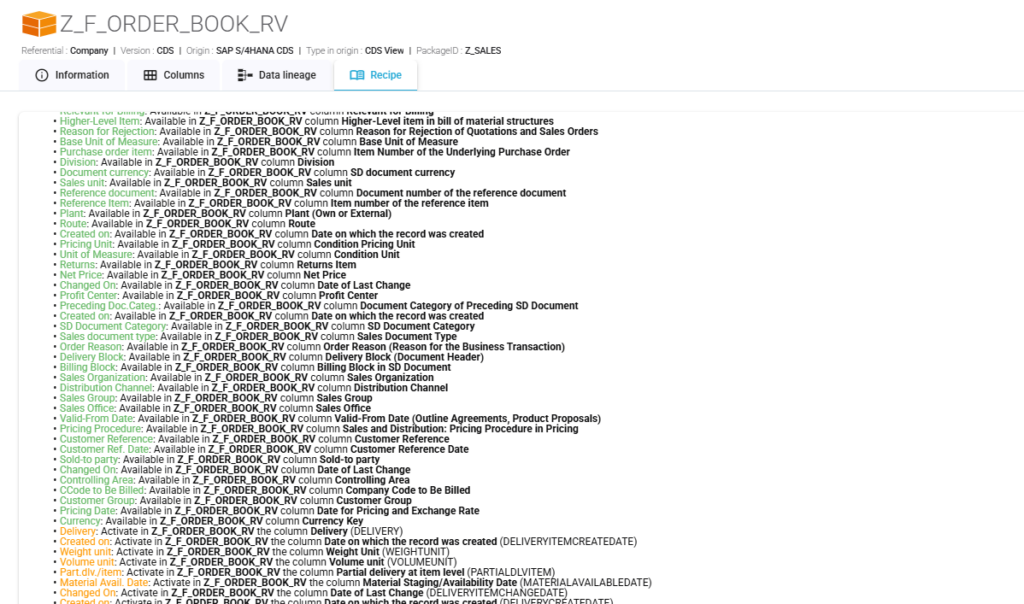
Result: You get a CDS View covering roughly 70% of functional requirements, already structured and documented, which only needs slight adjustments before validation with business users.
Conclusion
Migrating your Calculation Views to CDS Views should not be seen as a technical constraint but as a real opportunity for modernization, simplification, and standardization of your analytical layer. By relying on CDS Views—fully integrated with S/4HANA and Fiori applications—you align with SAP’s strategy while gaining performance, security, and governance benefits.
